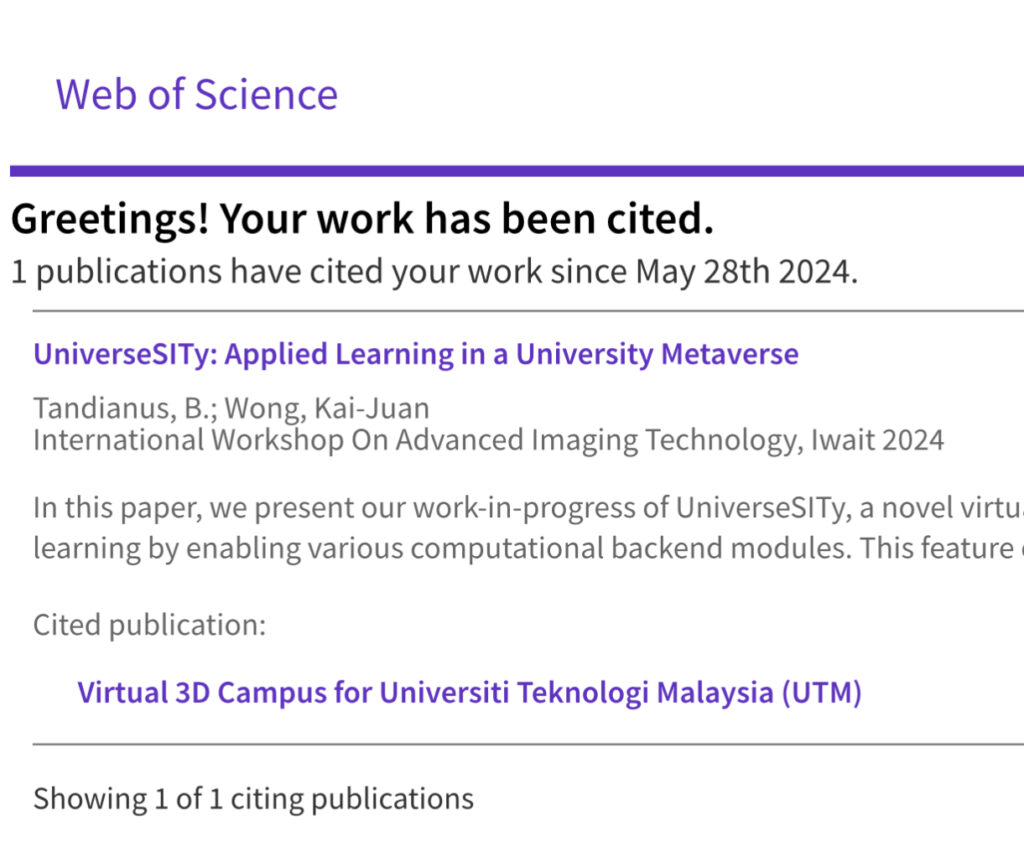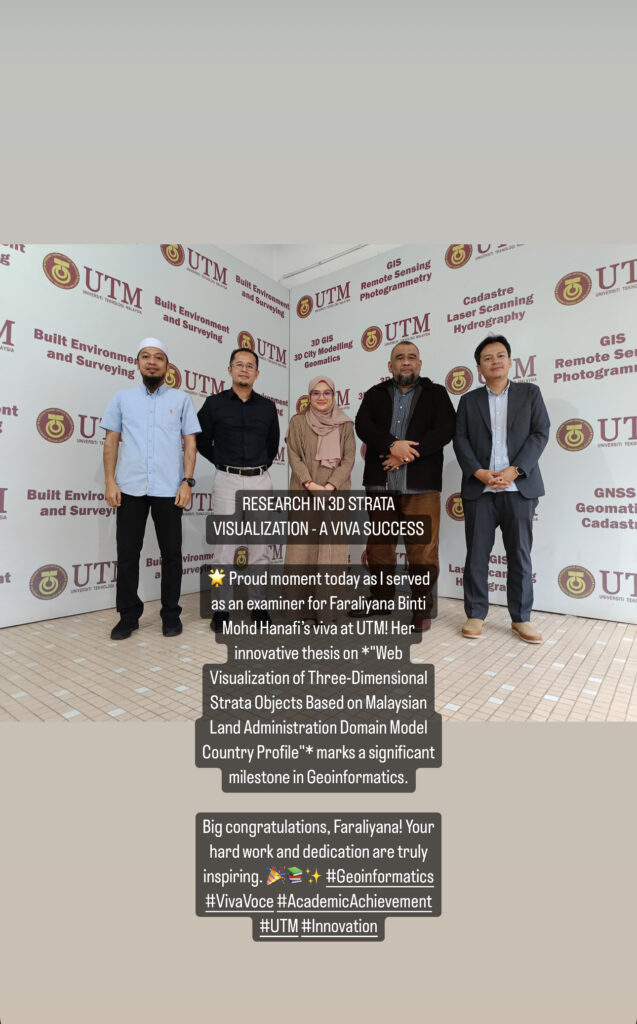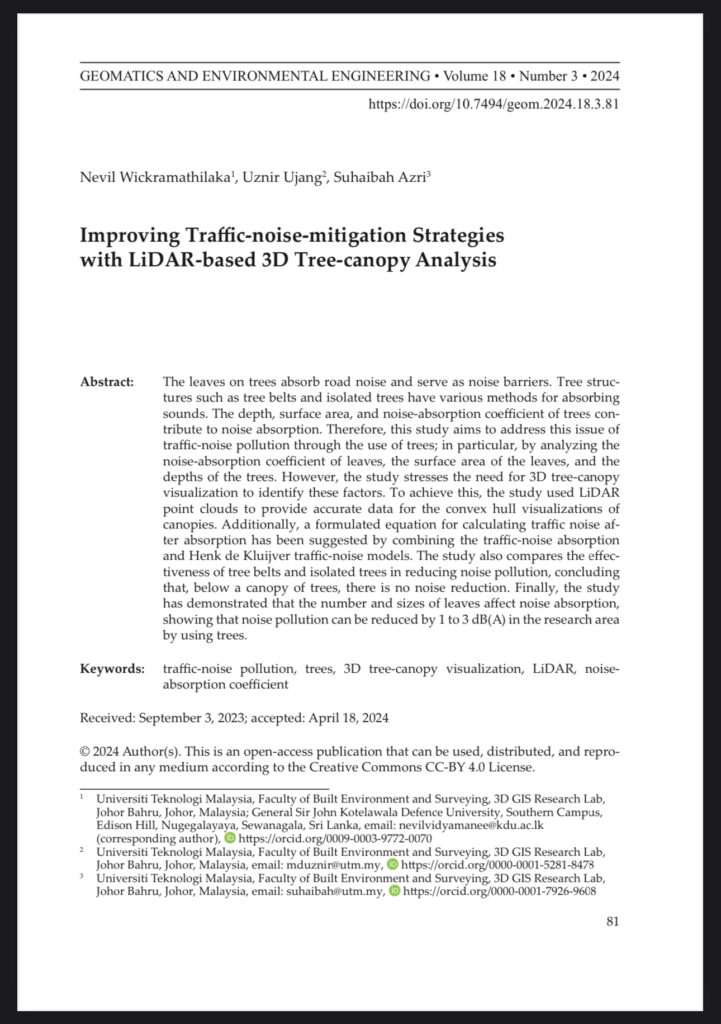
MY RESEARCH ON THE METAVERSE – ANOTHER STEP TOWARDS THE FUTURE OF LEARNING
My work on the “Virtual 3D Campus for Universiti Teknologi Malaysia (UTM)” has been cited in the recent paper “UniverseSITy: Applied Learning in a University Metaverse” presented at the International Workshop on Advanced Imaging Technology (IWAIT 2024).
So, what is the metaverse? The metaverse is a collective virtual shared space, merging virtually enhanced physical reality and physically persistent virtual spaces. It’s where digital and physical realities meet, allowing us to engage in ways we’ve only imagined in science fiction.
In practical terms, the metaverse can revolutionize education by providing immersive learning environments. Imagine attending a lecture, conducting experiments, or collaborating with peers from around the world—all in a virtual setting that feels just like being there in person.
However, it’s challenging to convince the older generation in academia about the metaverse. Their understanding often limits to just the digital world, but the metaverse is so much more—it’s an immersive and interactive experience that has the potential to revolutionize education and beyond. It’s fascinating to see how it can transform the way we learn, work, and interact.
But I hope to see positive growth in the understanding and acceptance of the metaverse among my academic circle in the near future. Better late than never.
For more insights into how the metaverse is shaping the future of education and to learn more about my work, feel free to contact me or explore my research further.


